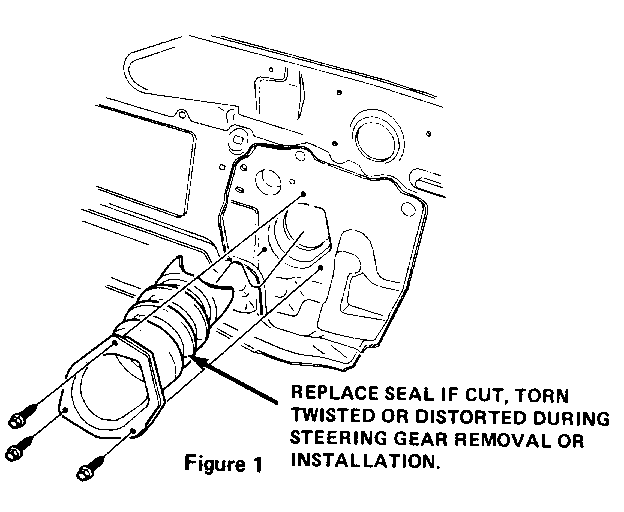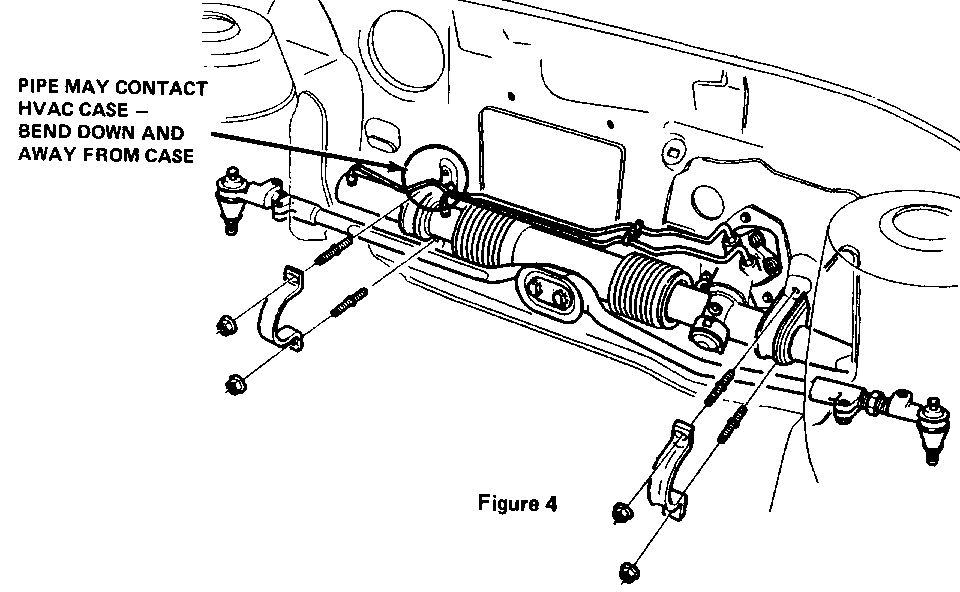IDENTIFYING RACK AND PINION STEERING SYSTEM NOISES

SUBJECT: IDENTIFYING RACK AND PINION STEERING SYSTEM NOISES
VEHICLES AFFECTED: 1982-1988 CARS WITH RACK AND PINION STEERING
The increased activity in steering gear service, due to Special Policy Bulletin 88-3-108, has resulted in an increase in the number of comments regarding steering system related noises which can be heard inside the vehicle.
When removing or installing any rack and pinion steering gear for service, be sure to inspect the intermediate steering shaft or steering coupling seal for cuts or tears which would allow noises to be transmitted into the passenger area. Also inspect the seal for being twisted, crushed or distorted as this can cause a clunk or rubbing sound. See Figure 1 for typical J/N car seal. Replace the seal as necessary.
On J and N models, check the upper portion of the steering coupling seal to be sure it is fully seated over the bushing or a noise path could be created. The seal is retained by the lip on the bushing. Refer to Figure 2. On A, C and H models, check the seal to be sure it is securely fastened to the cowl and lower column.
The center-take-off gears used on the J and N models, also use a dash seal which must be properly indexed on the housing before the gear is installed in the car. See Figure 3. If the dash seal is mispositioned another noise path can be created. A mispositioned dash seal could also cause a condition of stiff steering if the seal is rubbing on the steering coupling.
When diagnosing a growl, ground out, or rattle noise, on a J or N models, there is a possibility that one of the cylinder lines of the gear could be grounding out on the heater case on the right side of the cowl. See Figure 4. If this condition exists, bend the pipe away from the contact area to gain clearance.
All models are susceptible to having the power steering pump hoses lay against other components which could transmit steering system noises into the car. Hoses should be inspected to be sure they are not grounding out and creating a noise path.




General Motors bulletins are intended for use by professional technicians, not a "do-it-yourselfer". They are written to inform those technicians of conditions that may occur on some vehicles, or to provide information that could assist in the proper service of a vehicle. Properly trained technicians have the equipment, tools, safety instructions and know-how to do a job properly and safely. If a condition is described, do not assume that the bulletin applies to your vehicle, or that your vehicle will have that condition. See a General Motors dealer servicing your brand of General Motors vehicle for information on whether your vehicle may benefit from the information.
